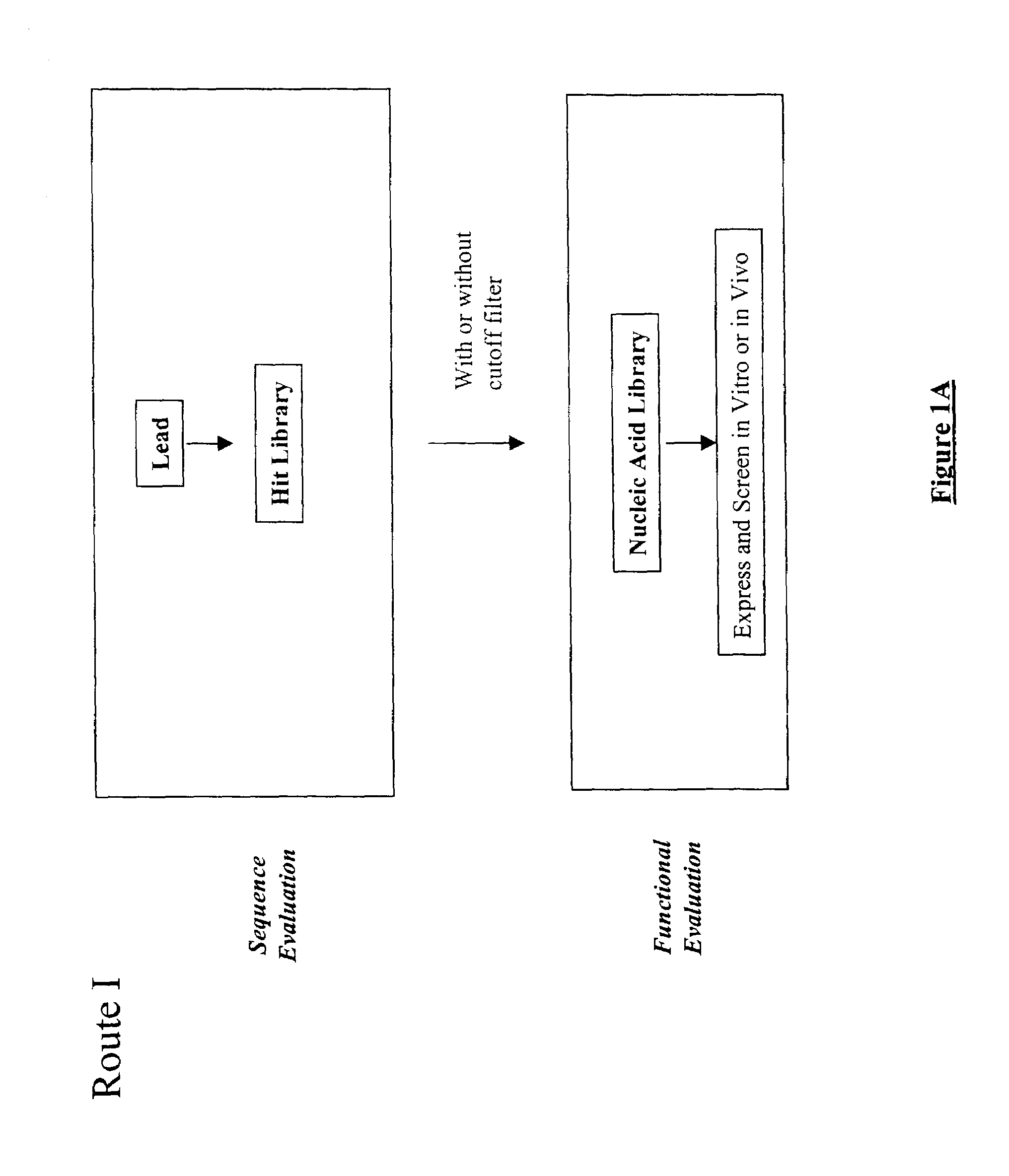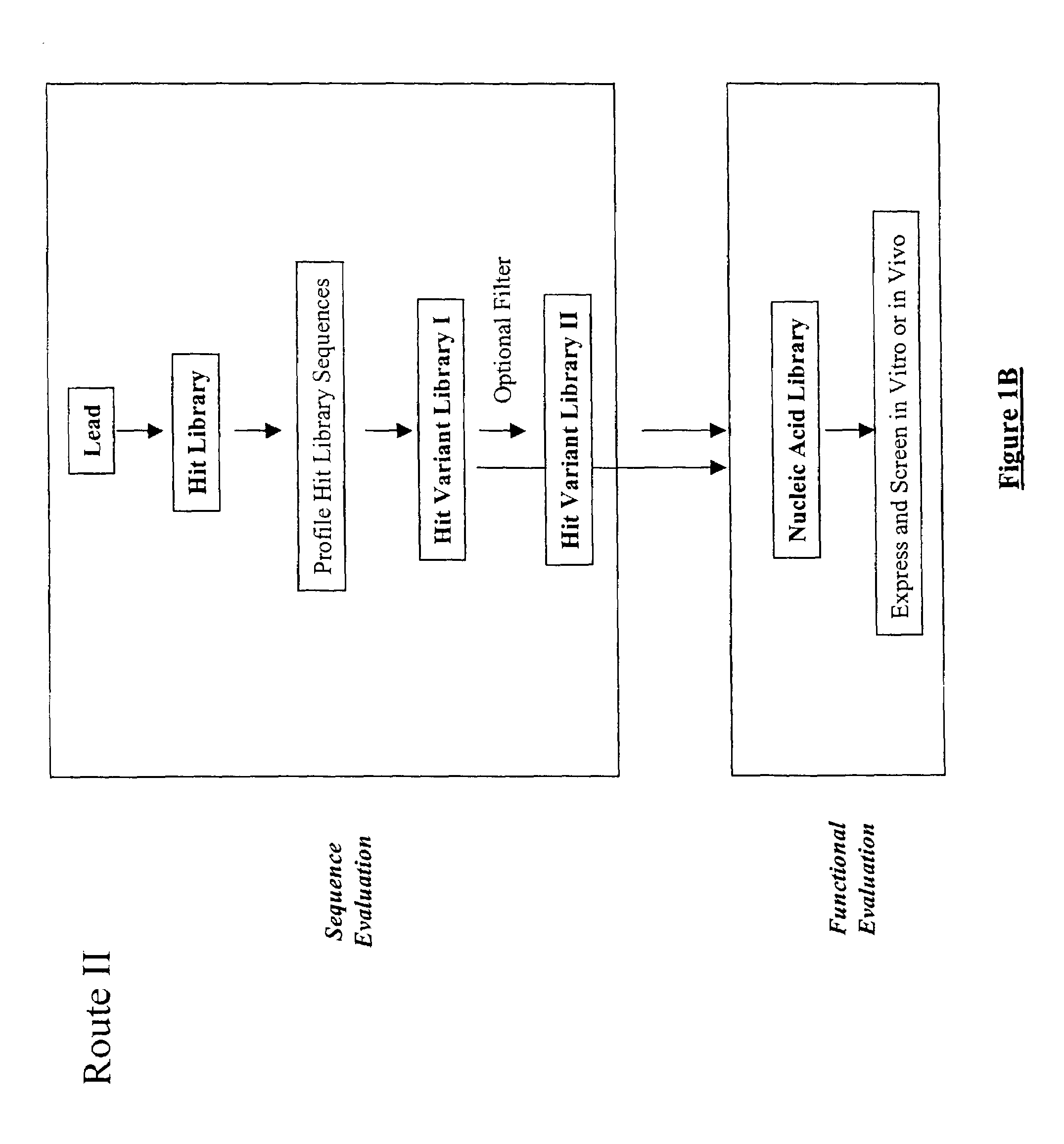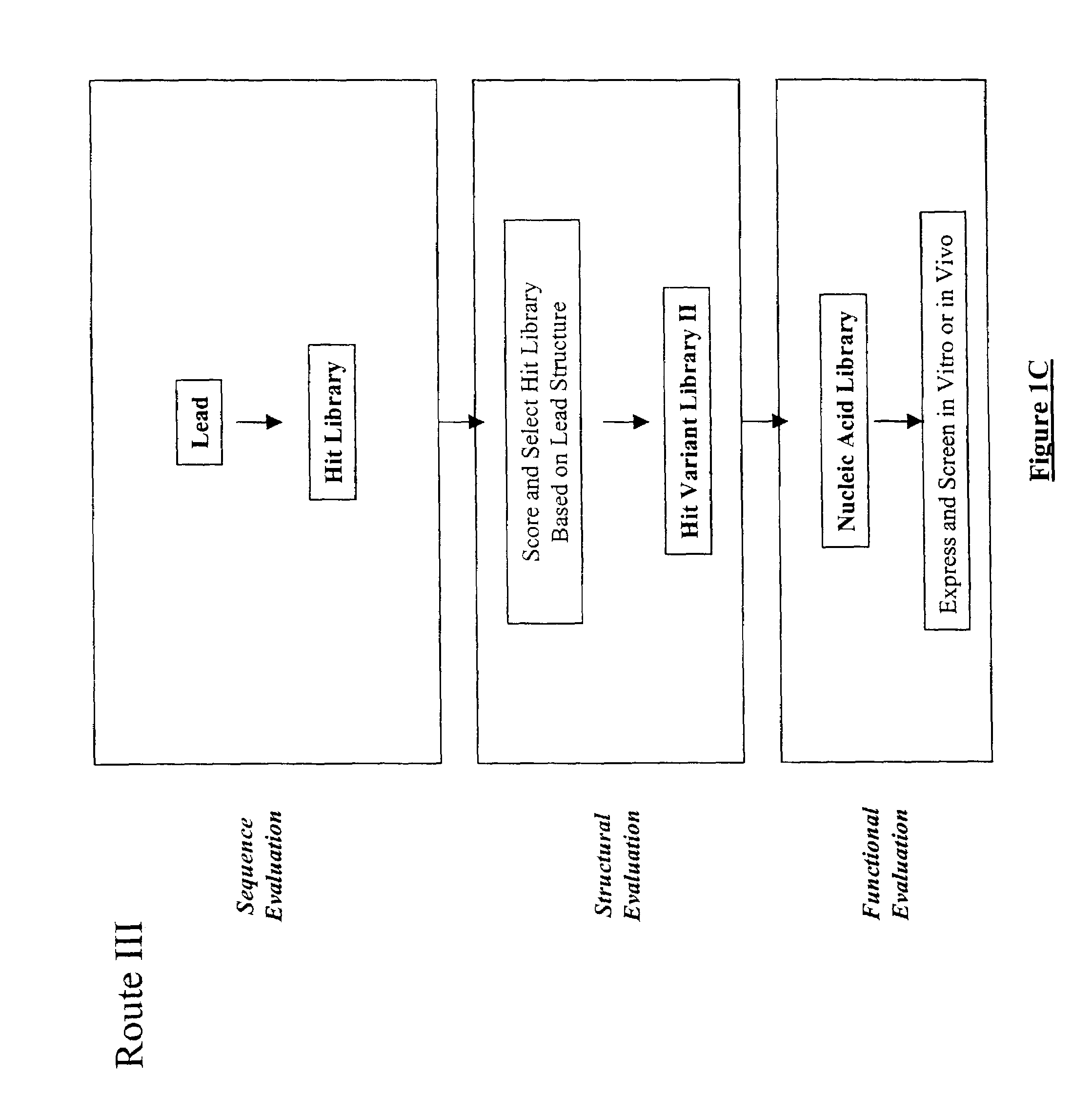Structure-based selection and affinity maturation of antibody library
a technology of affinity maturation and antibody library, which is applied in the field of structure-based selection and affinity maturation of antibody library, can solve the problems of laborious and unpredictable repeating fine tuning process, and achieve the effect of improving binding affinity and high throughpu
- Summary
- Abstract
- Description
- Claims
- Application Information
AI Technical Summary
Benefits of technology
Problems solved by technology
Method used
Image
Examples
example
[0720]Methods of the present invention were used for in silico construction of antibody libraries. The vascular endothelial growth factor (VEGF) is chosen as the antigen for the present proof-of-principle experiments in order to demonstrate the present invention in antibody design. A rich collection of sequence and structure information is available for VEGF and it receptor (Muller Y A, Christinger H W, Keyt B A, de Vos A M (1997) Structure 5, 1325–1338; Wiesmann C, Fuh G, Christinger H W, Eigenbrot C, Wells J A, de Vos A M (1997) Cell 91, 695–704), a complex between VEGF and its humanized antibody (Muller Y A, Christinger H W, Li B, Cunningham B C, Lowman H B, de Vos A M (1998) Structure 6, 1153–1167, and a complex between VEGF and its matured antibody (Chen Y, Wiesmann C, Fuh G, Li B, Christinger H W, McKay P, de Vos A M (1999) J Mol Biol 293, 865–881). These provide a good platform for testing the methods of the present invention. By using the methods provided by the present inve...
PUM
 Login to View More
Login to View More Abstract
Description
Claims
Application Information
 Login to View More
Login to View More - R&D
- Intellectual Property
- Life Sciences
- Materials
- Tech Scout
- Unparalleled Data Quality
- Higher Quality Content
- 60% Fewer Hallucinations
Browse by: Latest US Patents, China's latest patents, Technical Efficacy Thesaurus, Application Domain, Technology Topic, Popular Technical Reports.
© 2025 PatSnap. All rights reserved.Legal|Privacy policy|Modern Slavery Act Transparency Statement|Sitemap|About US| Contact US: help@patsnap.com



